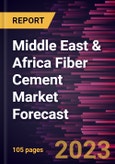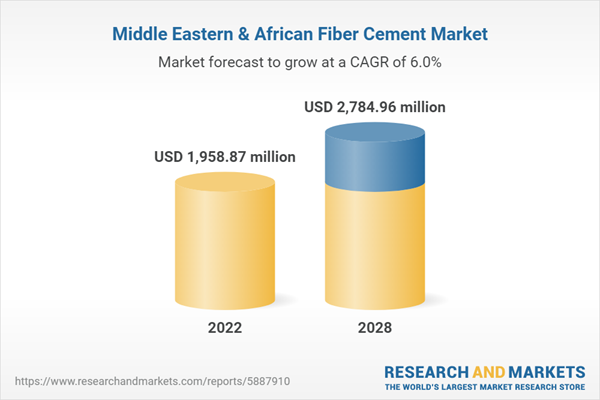Increasing Adoption of Eco-Friendly Construction Materials Middle East & Africa Fiber Cement Market
The building construction industry is increasingly focusing on encouraging developments of sustainable construction for a healthy and environmentally friendly living. Regular cement requires different raw materials, including water, during production, while fiber cement relies on recycled materials and consumes fewer resources. With water crises in certain areas worldwide, using materials that reduce water usage is necessary. Further, fiber cement products are not made of natural materials but have several advantages over renewable resources like wood. Rapid deforestation is a major environmental concern, so wood construction materials can fuel unsustainable forestry practices. As fiber cement siding lasts longer, they are preferable to wood siding and others that need to be replaced often. The higher replacement of siding results in high waste accumulation in local landfills. Fiber cement products do not use fossil fuels to produce vinyl construction material. Thus, due to an increasing preference for sustainability and a focus on eco-friendly building materials, there will be an increase in the development of eco-friendly fiber cement in the coming year.Middle East & Africa Fiber Cement Market Overview
The growing demand among real estate developers and the surge in infrastructural projects owing to industrialization and urbanization in the region are the key factors anticipated to drive the fiber cement market growth. The rising urban population has improved the construction of private residential buildings from semi-urban and urban cities. The government is looking forward to investing large amounts in the building and construction industry. The growing need for residential and non-residential buildings in the region has created lucrative opportunities for the fiber cement market in the Middle East and Africa. The increasing adoption of innovative eco-friendly materials in construction coupled government initiatives for developing smart building in the region will drive market revenue growth during the forecast period. In addition, rapid technological advancements in infrastructure development with improving economic conditions, have resulted in rising disposable income among consumers. Increasing investment in offices, malls, colleges, schools, universities, and hospitals in the region with the expansion of the hotel business is expected to support the regional revenue growth during the forecast period.Exhibit: Middle East & Africa Fiber Cement Market Revenue and Forecast to 2028 (US$ Million)
Middle East & Africa Fiber Cement Market Segmentation
The Middle East & Africa fiber cement market is segmented into type, application, end-use, and country.Based on type, the Middle East & Africa fiber cement market is segmented into air-cured and autoclaved. The autoclaved segment held a larger share of the Middle East & Africa fiber cement market in 2022.
Based on application, the Middle East & Africa fiber cement market is segmented into roofing, outside siding or façade, and others. The roofing segment held the largest share of the Middle East & Africa fiber cement market in 2022.
Based on end- use, the Middle East & Africa fiber cement market is segmented into residential and non-residential. The non-residential segment held a larger share of the Middle East & Africa fiber cement market in 2022.
Based on country, the Middle East & Africa fiber cement market is segmented int o South Africa, Saudi Arabia, the UAE, and the Rest of Middle East & Africa. The Rest of Middle East & Africa dominated the share of the Middle East & Africa fiber cement market in 2022.
Compagnie de Saint Gobain SA; Etex NV; Isam Khairi Kabbani Group; and Swisspearl Group AG are the leading companies operating in the Middle East & Africa fiber cement market.
Table of Contents
Companies Mentioned
- Compagnie de Saint Gobain SA
- Etex NV
- Isam Khairi Kabbani Group
- Swisspearl Group AG
Table Information
| Report Attribute | Details |
|---|---|
| No. of Pages | 105 |
| Published | June 2023 |
| Forecast Period | 2022 - 2028 |
| Estimated Market Value ( USD | $ 1958.87 million |
| Forecasted Market Value ( USD | $ 2784.96 million |
| Compound Annual Growth Rate | 6.0% |
| Regions Covered | Africa, Middle East |
| No. of Companies Mentioned | 4 |









